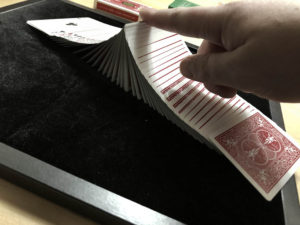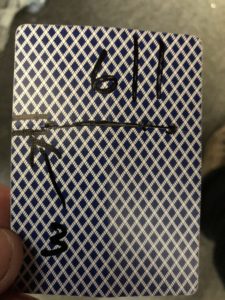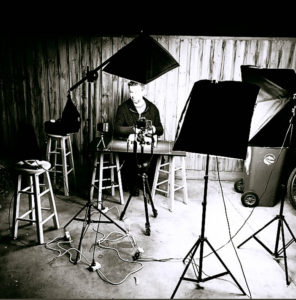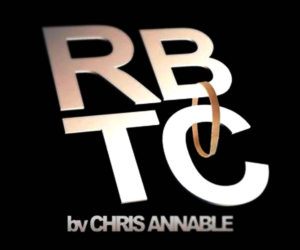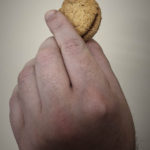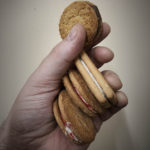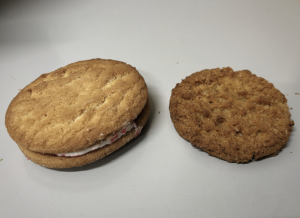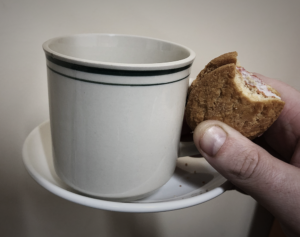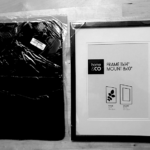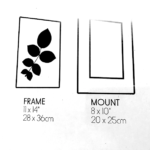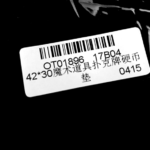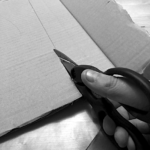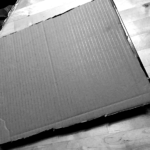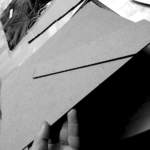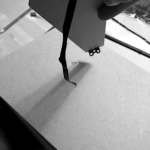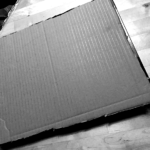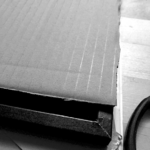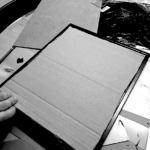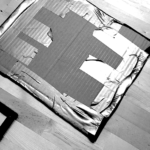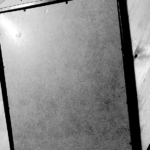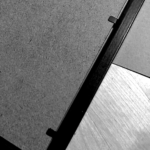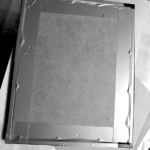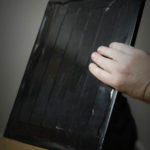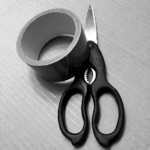My DIY Ideas
A habit I have when entering any creative area is “how would I do it?” Often before learning the method to a trick, I try to achieve the outcome by composing my own method.
The results of my experiments will be categorised on this website under “Creations“. The ideas will range from moves, tricks, decks and accessories.
Magic / Card Surfaces
I practice cards every day in all environments. It’s easy to have a deck in your pocket and practice your standing or in-the-hands sleights whenever there is a quiet moment.
A lot of the moves I work on are based at the card table. This requires a felt mat to enable access underneath cards and packets when lifting them. Neoprene & Rubber roll up mats are most common and are available at many magic stores. These are great for your desk or table but I enjoy practising in other locations – like while travelling or even on the couch.
I experimented with stable table devices, portable fold-out card tables, stools and chairs – all of them were fine but very inconvenient to both store and set up. I eventually spent some money and bought some card surfaces from Dan & Dave’s website. These were both expensive to purchase and expensive to ship but, as with all of Dan & Dave’s products, the quality is outstanding. I now own the Aluminium Close Up Pad (perfect for travelling) and a Green Magic Surface.
Create Your Own Surface
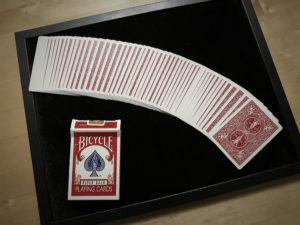
I have since created a way for those entering into card or magic work to create a surface that will suit their needs and their budget, until they can buy the real deal.
It may even eliminate the need for a more expensive option!
You will need the following 5 items:
1: An 11 x 14″ (28 x 36cm) frame with an 8 x 10″ Mount.
The sizes can vary slightly so long as:
- It has a strong backing that isn’t just cardboard
- The back is clipped in place from the frame (and doesn’t slide in)
- There is an included frame “mount” made of firm card
- The felt you use is larger in size
2: A 16x 11″ (42 x 30cm) A3 Size thin Card Felt
This is readily available from eBay and many online stores and the thin ones required cost well under $10. Search for “Magic Close Up Trick Mat“. Be mindful that these are imported and may take a while to ship but I have found the quality of even the cheaper options to be more than fine for practise.
3: Flat Cardboard (greater than A3 Size)
4: Strong Scissors
5: Large Roll of GAFFA (Cloth) Tape
STEP 1: Cut the Cardboard
Draw around the frame on the flat piece of card board and cut it out to that size. This will initially be too large but will enable more precise trimming later.
STEP 2: Prepare the Back
Remove any stands, clips or mounts directly attached to the rear board of the frame. This part needs to be flat so the surface is sturdy. Carefully remove the glass front and dispose of it. Tape it securely to ensure it won’t crack and become dangerous.
STEP 3: Trim the Cardboard
With the back board removed, lay the cardboard piece from step one over the back of the frame and trim to a size that fits inside.
STEP 4: Attach the Felt
Lay the felt face down on the table and place the cardboard on top. Ensure it is evenly centred.
Pull the felt over from one of the short edges and tape in 3 locations (top middle and bottom). Do the same with the opposite short edge and ensure the felt is stretched flat.
Without placing tape in a visible place on the front of the felt, apply some long strips to the top and bottom long edges – securing them in place. These are not the main supports for the felt so don’t require too much.
STEP 5: Add the Mount
Place the 8″ x 10″ Mount firmly over the top of the taped area and tape the centre edges to the cardboard – ensuring everything is as flat as possible.
STEP 6: Insert into the Frame
Push the Felt, Cardboard and Mount (now stuck together) into the frame. The glass should have been removed in Step 2 so the felt should push through the front.
Ensure the clips that hold the back of the frame in place are all sticking out and aren’t bending under the structure as you insert it.
STEP 7: Clip on the Frame’s Back Board
Pushing everything down as far as possible, clip on the backboard in the same way the frame had originally. There is more mass to fit in so it will be more difficult to lock in than before.
Tape over the clips to ensure they don’t scratch when placed face down. This will also help to hold everything in place.
STEP 8: Tape up the Back
This step is optional, but seeing as I used a black frame with black felt, I opted to completely tape up the wood style back with Black GAFFA (cloth) tape. This makes it sturdier to hold and creates an over-all better look
STEP 9: Adjust as needed.
At this stage, or any stage during the setup process, don’t be afraid to pull off the tape and try again for better results. Using GAFFA (cloth) tape, instead of screws and nails, isn’t as permanent and allows for easy adjustments that won’t damage the structure.
STEP 10: Practise!
Enjoy your new budget card surface anywhere and everywhere.
